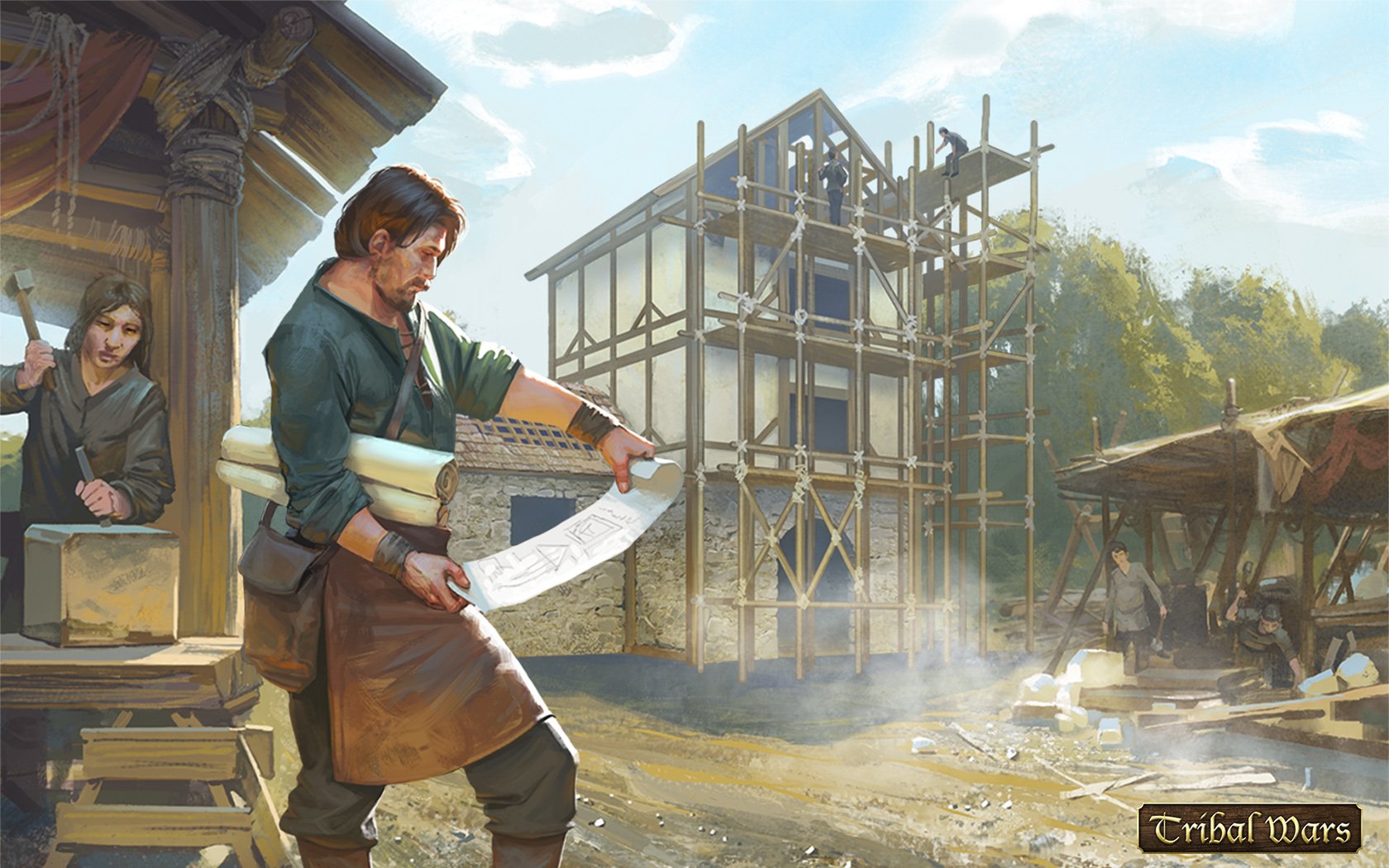
Our largest scaling challenge remains: most of our players play on our most recently launched worlds. We have fewer players now than we did 5 years ago, but have a much more complicated infrastructure and so must still be careful about performance and balancing. "We often do multiple deployments in a day.

"We can deploy a new version of the game to every server in under 5 minutes, and try to deploy all finished content at least one a week," says Dawson. But the game continues to evolve despite the challenges that come from working with old code. The Tribal Wars is now smaller than at its peak with eight members across community, design, system administration and art. "The first version of our iOS app consisted only of native registration/authentication, a nice menu, a webview, push notifications and of course, mobile payments" Push notifications about events on your account like a new incoming attack are very important in a real time game where missing vital information like this for a few hours can be the difference between a successful victory or defeat.

"While the game was certainly playable in your browser, it became clear that mobile users expected a more streamlined experience within an app. "For several years, we had offered a slimmed down version of the game for mobile web browsers and in 2011, decided that it was time that we offered our own native apps for iOS and Android, says Dawson. The browser game market began to evolve more towards highly graphical games and Tribal Wars reached its peak number of monthly active players. Our latest worlds would struggle to cope with the high database load from so many concurrent users."īy 2011, the market had changed yet again. This lead to quite an unbalanced setup because players would flock to the latest released worlds leaving very few on older worlds. "At this point, the game had reached millions of monthly active players and performance struggled. "By 2009, the team behind Tribal Wars had expanded to our peak size of 6 developers," says Dawson. We recently had one Polish world with so many active players that during peak times we had to handle over 120 player attacks arriving every second But there were only a couple of developers, a system admin and of course small servers. Mootools was a lightweight Javascript Framework tool that was released in the same yea, allowing for features like an interactive tutorial to be added. It’s now used as a foot stool by one of the system administrators.Ĭurrent owners InnoGames was founded as a company in 2007 to continue the development. By this point, Tribal Wars had become a successful browser game and the tools for developing browser games was getting better. One of the first servers to run Tribal Wars. At this point, the game was developed by only one developer, an artist and a designer.

Shortly after it was moved to a small number of servers rented from a local company, each having one Pentium 4 processor and 2GB of memory. "From an infrastructure perspective, the game began its life on a server sitting in the room of one of the founders. "Internet Explorer had a market share of 95 per cent, HTML5 had not yet been imagined and interactive media online was limited at best. "When the game was first made available to the public in 2003, the world of web development was a very different place," he explains.

Jon Dawson has been with the team for the last ten years and he talks us through some of the changes and problems maintaining a browser-based game presents to a 14 year old game. Since then, it has been in active development as web browsers, coding technology and user habits have evolved at a frightening pace. Mixing classic strategy with ease of play, the game was first released in 2003. Tribal Wars is a browser-based game from German developer InnoGames.


 0 kommentar(er)
0 kommentar(er)
